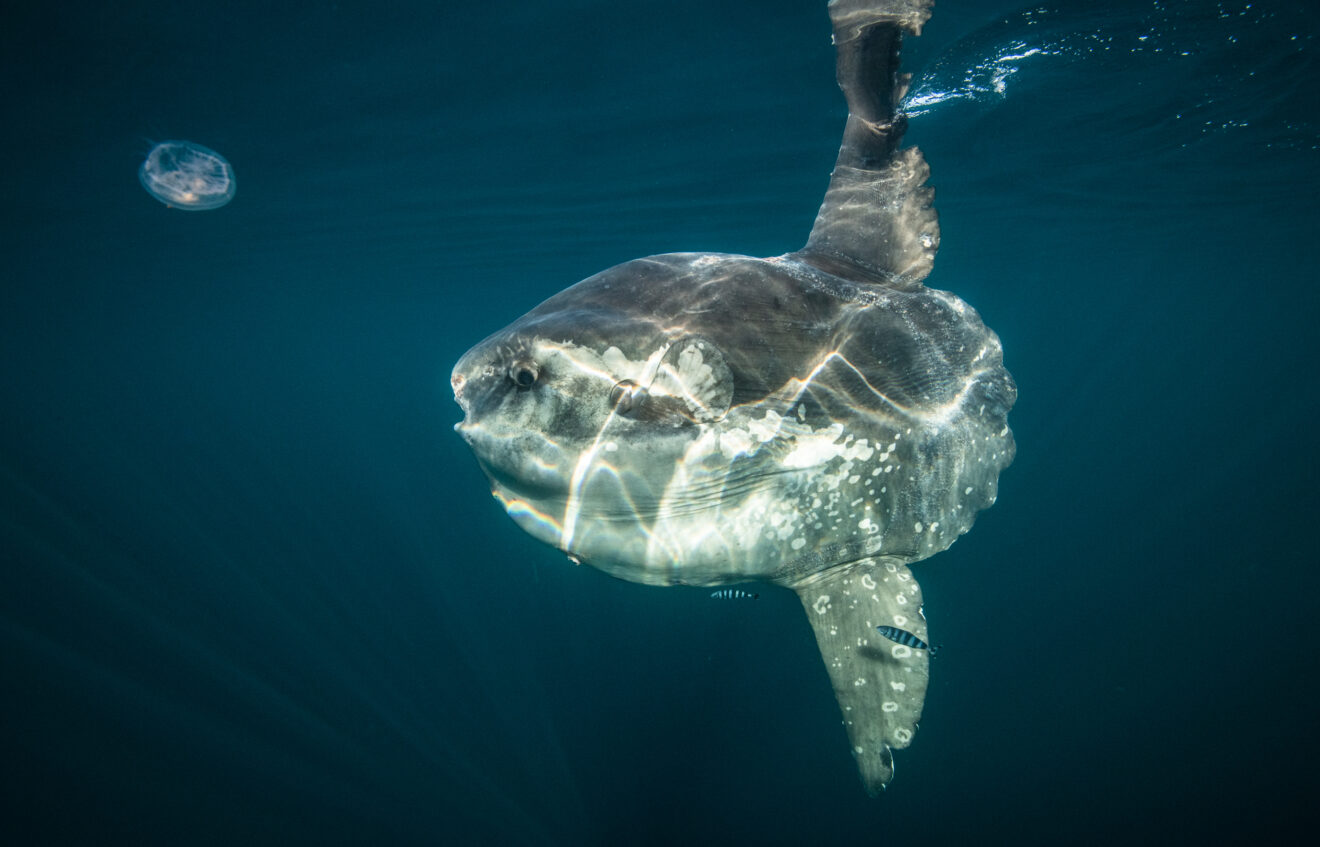Swimming North: How Climate Change Is Impacting Marine Biodiversity in Atlantic Canada
Gemma Rayner | February 11, 2025
Ocean sunfish are just one of many new fish species emerging in Atlantic Canadian waters. While these fairly frigid seas might seem like an unlikely spot to catch some rays, the region is witnessing significant shifts climate change accelerates. Warmer ocean temperatures, changing currents, and changes to food availability are all transforming the marine ecosystem—with consequences for the environment, the fishing industry, and coastal communities.

Image – An ocean sunfish (Mola mola) swims off the coast of Halifax, Nova Scotia, Canada in 2018.
Credit – Nick Hawkins
The ocean’s temperature is rising at an alarming rate due to climate change, and this warming is more pronounced in Atlantic Canada. Recent studies have shown that sea surface temperatures in the region have risen by about 1.5°C to 2°C since the mid-20th century, and projections suggest that this trend will continue. As the ocean warms, species traditionally found in some areas (such as cod and lobster) are becoming less abundant, while species that typically reside in southern waters are gradually shifting northward in search of more suitable conditions.
Warm-water species such as silver hake, blackbelly rosefish, mahi-mahi, ocean sunfish, and even some tropical species are now appearing in Atlantic Canada on the Scotian Shelf, in the Gulf of St. Lawrence, and along Newfoundland and Labrador’s coast. These emerging species are not undergoing a temporary migration; they are beginning to reproduce and establish populations, potentially altering food webs and fishing patterns. This could place pressure on local fish populations, particularly for species that are already struggling due to overfishing or habitat loss.
In some cases, the northward migration of southern species like silver hake could lead to the full-on displacement of traditional cold-water species. Atlantic cod—particularly in NAFO Division 3Ps, which was once the backbone of the region’s fishing industry—has already seen significant population declines, and a region that was once dominated by cod has now switched to silver hake, a warm-water species.
All this has implications for the fishing industry in Atlantic Canada. Fisheries that have relied on particular species for hundreds of years are now facing a new reality. While some of the emerging species may offer new opportunities for fishers, others, like silver hake, may complicate fishing practices by competing with cod. Shifting fish populations may also lead to new challenges in terms of fishing regulations and management.
In order to protect marine biodiversity and the livelihoods that depend on it, we need action on multiple scales. First, fisheries will need to adapt to new species, monitor changing population dynamics, and potentially change their fishing practices to ensure sustainable harvests in the face of an evolving ecosystem. Second, the national and provincial governments need to ensure they are taking all actions necessary to reduce greenhouse gas emissions and invest in renewable energy. By addressing both the impacts and root cause of climate change, these measures can help us prepare for the future while limiting further damage.
The changing fish populations in Atlantic Canada are a clear indicator of the broader impacts of climate change on marine environments. As ocean temperatures rise and ecosystems continue to shift, both fisheries managers and local coastal communities must work together to adapt to this new reality.
Gemma Rayner is Fisheries and Special Projects Advisor at Oceans North.
